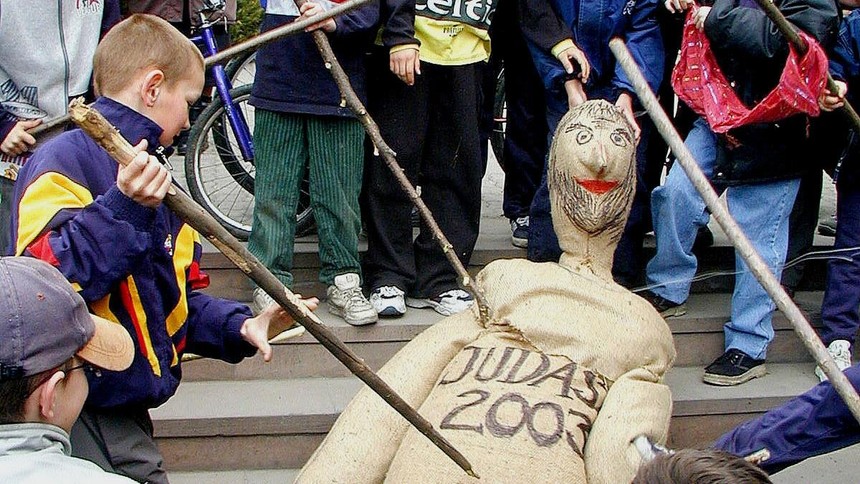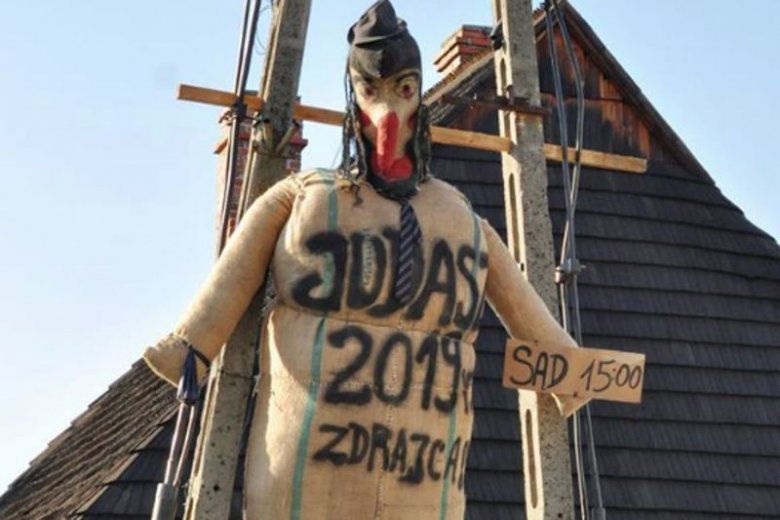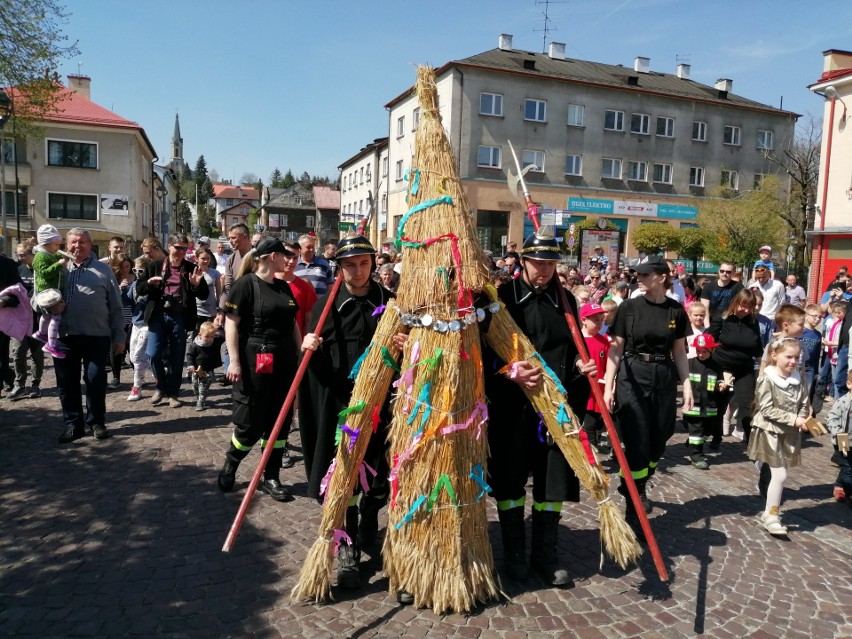Post by Bonobo on Aug 14, 2019 17:26:46 GMT 1
A controvercial custom turned into a scandal when the effigy of Judas mauled in streets of Pruchnik resembled a Jew. Children took part in the ceremony. Jewish organisations protested.
en.wikipedia.org/wiki/Burning_of_Judas
The burning of Judas is an Easter-time ritual originated in European[1] Christian communities, where an effigy of Judas Iscariot is burned. Other related mistreatment of Judas effigies include hanging, flogging, and exploding with fireworks.[2][3] Anthropologists generalize these types of activities as "scapegoating rituals". A similar ritual in Jewish tradition would be the hanging and burning an effigy of Haman and his ten sons during Purim.[4][5]
Though not an official part of the Easter liturgical cycle, the custom is typically a part of the reenactment of the story of the Passion that is practiced by the faithful during Easter. Customs vary, but the effigy of Judas is typically hanged (reenacting Matthew 27:5) on Good Friday, then burned on the night of Easter Sunday.
In many parts of Latin America this practice occurs on the eve of the New Year as a symbol of ridding one's self of evil and beginning a new year in spiritual purity. Some communities observe this ritual using various effigies, including the biblical Judas (who betrayed Jesus). This custom, during which the effigy is burned on a stake, is called "Quema del Judas" ("the burning of Judas") in Uruguay and Argentina, and "Quema del Año Viejo" ("the burning of the old year")[6] in other places.
Traditional effigy

2003 effigy

2019 effigy




Polish Judas ritual 'anti-Semitic' - Jewish congress
22 April 2019
The World Jewish Congress (WJC) has voiced outrage over a Polish town's ritual beating of a Judas effigy which looks like a caricature Orthodox Jew.
The Good Friday ritual in Pruchnik, south-eastern Poland, was filmed and posted by a Polish news website.
"Jews are deeply disturbed by this ghastly revival of medieval anti-Semitism that led to unimaginable violence and suffering," the WJC said.
More than three million Polish Jews were murdered during World War Two.
In total, Nazi Germany murdered about six million Jews in death camps in occupied Poland and killing fields in the former Soviet Union.
In the Pruchnik ritual - part of Roman Catholic Easter celebrations - children crowded round the effigy beating it with sticks, as adults dragged it through the streets. The mock Judas had a big red nose, black hat and Orthodox-style ringlets.
In the past the Catholic Church in Poland had banned such practices.
Last year a diplomatic row erupted between Israel and Poland after the conservative Polish government made it an offence to allege that the Polish nation was complicit in Nazi crimes. US officials also criticised the new law.
Later the Polish government watered down the controversial law, by scrapping the prison sentences prescribed for such offences.
Research shows that thousands of Poles collaborated with the Nazis. But many other Poles risked their lives to help Jews.
www.bbc.com/news/world-europe-48012965
en.wikipedia.org/wiki/Burning_of_Judas
The burning of Judas is an Easter-time ritual originated in European[1] Christian communities, where an effigy of Judas Iscariot is burned. Other related mistreatment of Judas effigies include hanging, flogging, and exploding with fireworks.[2][3] Anthropologists generalize these types of activities as "scapegoating rituals". A similar ritual in Jewish tradition would be the hanging and burning an effigy of Haman and his ten sons during Purim.[4][5]
Though not an official part of the Easter liturgical cycle, the custom is typically a part of the reenactment of the story of the Passion that is practiced by the faithful during Easter. Customs vary, but the effigy of Judas is typically hanged (reenacting Matthew 27:5) on Good Friday, then burned on the night of Easter Sunday.
In many parts of Latin America this practice occurs on the eve of the New Year as a symbol of ridding one's self of evil and beginning a new year in spiritual purity. Some communities observe this ritual using various effigies, including the biblical Judas (who betrayed Jesus). This custom, during which the effigy is burned on a stake, is called "Quema del Judas" ("the burning of Judas") in Uruguay and Argentina, and "Quema del Año Viejo" ("the burning of the old year")[6] in other places.
Traditional effigy

2003 effigy
2019 effigy




Polish Judas ritual 'anti-Semitic' - Jewish congress
22 April 2019
The World Jewish Congress (WJC) has voiced outrage over a Polish town's ritual beating of a Judas effigy which looks like a caricature Orthodox Jew.
The Good Friday ritual in Pruchnik, south-eastern Poland, was filmed and posted by a Polish news website.
"Jews are deeply disturbed by this ghastly revival of medieval anti-Semitism that led to unimaginable violence and suffering," the WJC said.
More than three million Polish Jews were murdered during World War Two.
In total, Nazi Germany murdered about six million Jews in death camps in occupied Poland and killing fields in the former Soviet Union.
In the Pruchnik ritual - part of Roman Catholic Easter celebrations - children crowded round the effigy beating it with sticks, as adults dragged it through the streets. The mock Judas had a big red nose, black hat and Orthodox-style ringlets.
In the past the Catholic Church in Poland had banned such practices.
Last year a diplomatic row erupted between Israel and Poland after the conservative Polish government made it an offence to allege that the Polish nation was complicit in Nazi crimes. US officials also criticised the new law.
Later the Polish government watered down the controversial law, by scrapping the prison sentences prescribed for such offences.
Research shows that thousands of Poles collaborated with the Nazis. But many other Poles risked their lives to help Jews.
www.bbc.com/news/world-europe-48012965












